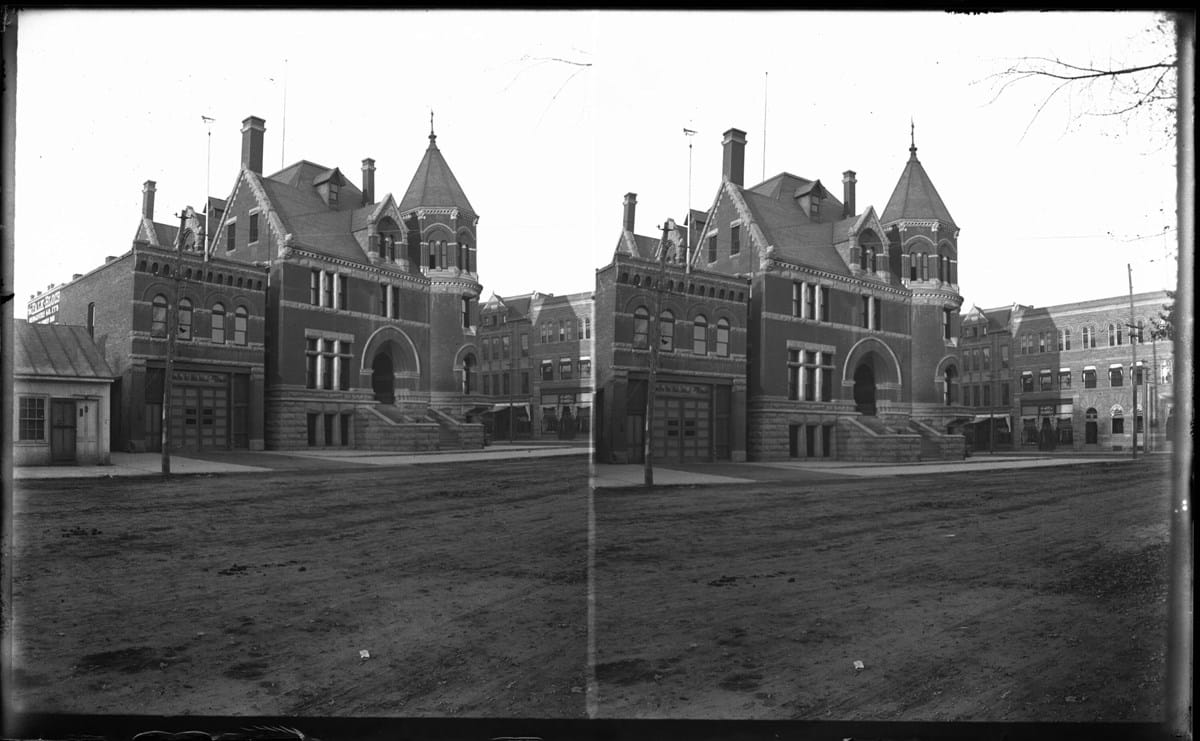
Old Boise Historic District

On July 7, 1863, three days after the establishment of the fort by the United States Army, the first Boise townsite was platted consisting of ten blocks, five on each side of Main Street, extending from what is now called 5th Street to 10th Street. Blocks 5, 6, and 7 of that plat still have the same block numbers in the later and official Boise City Original Townsite Survey and are the three core blocks of the proposed historic district.
The district, as a whole, contains the largest number of historically significant and architecturally important commercial buildings in close proximity in the downtown area. That these buildings have survived and are now attracting investment because of their aesthetic and historic character attests to their cultural and economic value.
The district contains the oldest commercial structure in the city (the Perrault Building dating from 1879). It also has the oldest house in continuous use as a residence (the Cyrus Jacobs House constructed in 1864). Most of the buildings, however, date from the turn of the century and exhibit the design vocabulary current at that time, including various vernacular-commercial styles and Romanesque Revival types.
Following the turn of the century many of the buildings were acquired, or built, by the newly arrived Basques who constitute an important and numerous cultural-ethnic group and who continue their language and social ties to the area with the Basque Center and whose history is related to many other buildings in the district.
Recent Trends
The historic Old Boise District has continued to flourish, as new and old alike create a vibrant and active downtown experience. The district is especially known for its abundant nightlife with unique restaurants and music venues. Even though the district remains an important part of downtown Boise, it has had little change in the addition of new buildings.
Veltex Building
The new Veltex Building on the corner of 5th and Main Street, with its brick façade and courteous nods to historic buildings, has added a valuable insight into the future potential for growth of new buildings in Old Boise.
Basque Block
Likewise, the latest renovations to buildings in the Basque Block and the north side of Idaho Street prove that the district's historic and existing buildings are invaluable in their ability to adapt and age with ongoing trends.
Old Boise Historic District At-a-Glance
Historic Designations
- 1978: Listed on the National Register of Historic Places
- 1980: Designated as a local historic district by Boise City.
Period of Significance: 1864-1920
Prominent Architectural Styles
- Romanesque Revival, Vernacular-Commercial
Unique Characteristics
- Largest number of historically significant commercial buildings downtown.
Design Goals
- Maintain the stately elegance of this district, as reflected in the scale, quality of design and construction.
Policy
- Preserve the unique historic character of the district and ensure that improvements respect the historic scale of construction. Preservation of the key details of high style buildings should be a priority.
Send a Message to Planning
Thank you for your interest in the Planning division. Please fill out the form below and a representative will be in touch with you. If you are inquiring about a specific project, please include the record number or project address.